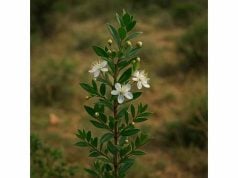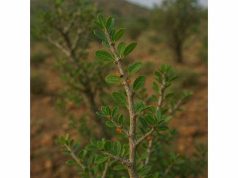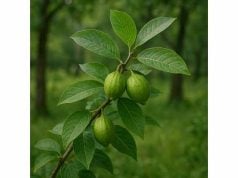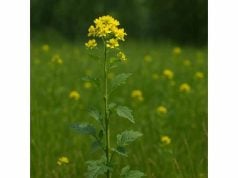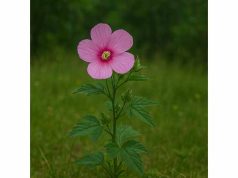
Mahonia is a versatile genus of evergreen shrubs widely recognized in traditional herbal medicine for its potent healing properties and distinctive bitter taste. Commonly known as Oregon grape (particularly Mahonia aquifolium) among other species, these plants are celebrated for their high content of bioactive alkaloids, flavonoids, and phenolic compounds. Mahonia is used to support liver health, regulate blood sugar levels, boost immunity, and promote digestive wellness. In addition, its antimicrobial and anti-inflammatory properties have made it a valuable natural remedy for skin conditions and infections. This comprehensive guide delves into Mahonia’s botanical profile, phytochemical composition, extensive health benefits, diverse applications, and the latest scientific research.
Table of Contents
- Botanical Overview and Identification
- Phytochemical Analysis and Key Compounds
- Therapeutic Benefits and Essential Qualities
- Practical Applications and Precautionary Guidelines
- Research Insights and Significant Findings
- Frequently Asked Questions
Botanical Overview and Identification
Mahonia comprises a group of evergreen shrubs belonging to the Berberidaceae family. Among its many species, Mahonia aquifolium, also known as Oregon grape, is the most widely recognized. Native to the western regions of North America, particularly the Pacific Northwest, Mahonia plants thrive in a variety of habitats—from moist woodlands to rocky slopes—and prefer well-drained, acidic soils. These shrubs typically reach heights between 1 to 3 meters and are characterized by spiny, holly-like leaves with a glossy, dark green appearance. Clusters of small, yellow flowers bloom in spring, followed by the formation of dark blue or purple berries in the fall.
The leaves of Mahonia are often used in traditional remedies due to their bitter but medicinal qualities. The plant’s bark and roots are rich sources of bioactive compounds and have been employed for centuries in indigenous healing practices. In addition to its medicinal uses, Mahonia is also valued for its ornamental appeal in gardens, thanks to its striking foliage and vibrant berry clusters. Its adaptability to various climatic conditions and soil types has allowed it to be cultivated in many parts of the world beyond its native range.
Mahonia’s botanical features not only contribute to its resilience in diverse environments but also underpin its therapeutic potential. The spiny leaves serve as a natural defense mechanism, while the bright, clustered flowers attract pollinators that aid in the plant’s reproduction. The subsequent production of nutrient-rich berries further enhances its ecological role, providing food for birds and small mammals.
Culturally, Mahonia has been revered for its medicinal properties and has a storied history in traditional herbal medicine. Early Native American and early European settlers alike recognized its healing potential and incorporated it into remedies for a range of ailments, including digestive disorders, infections, and inflammatory conditions. Today, modern herbalists continue to explore and validate these traditional uses through scientific research, making Mahonia an important subject in both contemporary herbal medicine and botanical studies.
In summary, the botanical overview of Mahonia highlights a robust, adaptable shrub with distinctive spiny leaves, vibrant flowers, and nutrient-rich berries. Its traditional uses, ecological significance, and ornamental value combine to make it a plant of considerable interest for both medicinal and horticultural purposes.
Phytochemical Analysis and Key Compounds
The medicinal properties of Mahonia are largely attributed to its rich phytochemical profile. Modern research has identified a variety of bioactive compounds that work synergistically to confer health benefits. Below, we explore the primary chemical constituents found in Mahonia and their roles in its therapeutic efficacy.
1. Alkaloids
Mahonia is especially renowned for its alkaloid content, which is the cornerstone of its medicinal properties.
- Berberine:
Berberine is one of the most significant alkaloids in Mahonia. It exhibits strong antimicrobial, anti-inflammatory, and antidiabetic properties. Berberine works by modulating glucose metabolism and supporting cardiovascular health, making it a critical component in managing metabolic syndrome. - Magnoflorine:
This alkaloid has been shown to possess sedative and anti-inflammatory properties, contributing to the herb’s ability to alleviate pain and reduce inflammation. - Palmatine:
Known for its antimicrobial and antispasmodic effects, palmatine further enhances Mahonia’s therapeutic profile, particularly in supporting digestive and respiratory health.
2. Flavonoids
Flavonoids in Mahonia contribute significantly to its antioxidant capacity and overall health benefits.
- Quercetin:
Quercetin is a powerful antioxidant that helps neutralize free radicals and reduce oxidative stress. It also plays a role in modulating inflammatory responses. - Kaempferol:
This flavonoid exhibits anti-inflammatory and anticancer activities, supporting cellular health and protecting against chronic diseases. - Rutin:
Rutin is known for its vascular-protective properties, strengthening capillaries and contributing to cardiovascular health by improving blood circulation.
3. Phenolic Compounds
Phenolic compounds add to the herb’s antioxidant defense.
- Caffeic Acid:
With potent antioxidant properties, caffeic acid helps protect cells from oxidative damage and supports overall immune function. - Chlorogenic Acid:
This compound is involved in glucose regulation and has been associated with improved cardiovascular health, aiding in the modulation of blood sugar levels. - Ferulic Acid:
Ferulic acid enhances the stability of other antioxidants and plays a role in skin protection and wound healing.
4. Tannins
Tannins are natural astringents that provide several therapeutic benefits.
- Condensed Tannins:
These compounds help tighten tissues, reduce inflammation, and support digestive health by mitigating gastrointestinal irritation. - Hydrolyzable Tannins:
They contribute to the herb’s antimicrobial activity and can aid in wound healing by promoting tissue repair.
5. Additional Minor Constituents
Mahonia also contains several minor constituents that, while present in smaller amounts, contribute to its overall efficacy.
- Essential Oils:
A mixture of volatile oils contributes to the plant’s characteristic aroma and possesses antimicrobial and anti-inflammatory properties. - Sterols:
Plant sterols in Mahonia help maintain cell membrane integrity and may have a role in modulating cholesterol levels. - Saponins:
These glycosides assist in immunomodulation and have been shown to support metabolic balance.
Synergistic Effects
The diverse array of phytochemicals in Mahonia works synergistically, meaning the combined effect of these compounds is greater than the sum of their individual actions. For instance, the antioxidant effects of flavonoids, phenolic acids, and tannins collectively protect against cellular damage more effectively than any single component could. Similarly, the anti-inflammatory actions of berberine and magnoflorine work together to reduce systemic inflammation, thereby enhancing the herb’s overall therapeutic profile.
Standardization and Extraction Techniques
Modern analytical methods, such as high-performance liquid chromatography (HPLC) and gas chromatography-mass spectrometry (GC-MS), are used to isolate and quantify the active compounds in Mahonia. These techniques allow for the standardization of extracts, ensuring consistent potency and quality in commercial herbal supplements and medicinal formulations.
Summary
Mahonia’s phytochemical profile is complex and multifaceted, featuring key alkaloids, flavonoids, phenolic compounds, tannins, and other bioactive constituents. These compounds work in harmony to provide a wide range of therapeutic effects, from antimicrobial and anti-inflammatory actions to antioxidant protection and metabolic regulation. Understanding this intricate chemical composition is essential for appreciating the full medicinal potential of Mahonia and for developing effective, standardized herbal products.
Therapeutic Benefits and Essential Qualities
Mahonia is widely regarded for its robust therapeutic benefits, many of which have been substantiated by both traditional usage and modern research. Its diverse range of bioactive compounds delivers a holistic approach to health, addressing multiple systems within the body. Below, we detail the principal health benefits and essential qualities that make Mahonia a valued herb in herbal medicine.
1. Antimicrobial and Antiviral Properties
Mahonia’s high concentration of alkaloids, especially berberine, gives it potent antimicrobial activity.
- Infection Control:
Berberine has been shown to inhibit the growth of various bacteria, viruses, and fungi, making Mahonia an effective natural remedy for infections. - Oral Health:
Due to its antimicrobial effects, Mahonia extracts are sometimes incorporated into oral care products to help prevent dental plaque and gum disease.
2. Anti-inflammatory and Antioxidant Defense
Chronic inflammation and oxidative stress are linked to numerous health conditions, and Mahonia is particularly effective in counteracting these processes.
- Oxidative Stress Reduction:
The flavonoids and phenolic compounds in Mahonia neutralize free radicals, reducing oxidative damage to cells and tissues. - Inflammation Modulation:
By downregulating pro-inflammatory cytokines, Mahonia helps alleviate conditions such as arthritis, inflammatory bowel disease, and other chronic inflammatory disorders.
3. Metabolic and Cardiovascular Support
Mahonia contributes to improved metabolic and cardiovascular health through several mechanisms.
- Blood Sugar Regulation:
Berberine is well-known for its ability to modulate glucose metabolism, helping to lower blood sugar levels and improve insulin sensitivity. - Cholesterol Management:
The combined effects of flavonoids and plant sterols in Mahonia support a healthy lipid profile by reducing low-density lipoprotein (LDL) cholesterol and boosting high-density lipoprotein (HDL) cholesterol. - Vascular Health:
Its antioxidant properties promote better endothelial function and improved blood circulation, which can reduce the risk of heart disease.
4. Liver Detoxification and Hepatoprotection
Mahonia has been traditionally used to support liver health and promote detoxification.
- Detoxification Support:
The herb stimulates bile production and enhances the liver’s ability to process and eliminate toxins. - Hepatoprotective Effects:
Research indicates that Mahonia can help protect liver cells from damage induced by oxidative stress and toxic substances, supporting overall liver function.
5. Digestive Health and Gastrointestinal Function
Mahonia is effective in promoting digestive wellness.
- Stimulation of Digestive Enzymes:
It aids in the production of enzymes necessary for efficient digestion, helping to alleviate symptoms of indigestion, bloating, and constipation. - Antispasmodic Effects:
Its mild antispasmodic properties help relax the smooth muscles of the gastrointestinal tract, reducing cramps and discomfort.
6. Immune System Enhancement
The immunomodulatory effects of Mahonia help strengthen the body’s natural defense mechanisms.
- Enhanced Immunity:
By balancing the immune response and reducing inflammation, Mahonia contributes to a more resilient immune system that can better ward off infections. - Support During Illness:
Its antimicrobial properties further assist in preventing and fighting off various infections, making it a valuable adjunct during periods of illness.
7. Skin Health and Anti-Aging Benefits
Topical applications of Mahonia have been used to improve skin condition.
- Wound Healing:
The anti-inflammatory and antimicrobial properties of Mahonia facilitate faster healing of minor wounds and skin irritations. - Anti-Aging Effects:
Its antioxidants protect the skin from free radical damage, reducing the appearance of wrinkles and promoting a more youthful complexion.
8. Neurological and Cognitive Support
Emerging evidence suggests that Mahonia may also benefit brain health.
- Neuroprotective Effects:
Certain alkaloids in Mahonia may protect nerve cells from damage, potentially improving cognitive function and reducing the risk of neurodegenerative diseases. - Mood Enhancement:
The herb’s ability to modulate inflammatory responses in the brain may contribute to improved mood and mental clarity, offering potential benefits for managing mild depression and anxiety.
Summary
Mahonia offers a holistic range of therapeutic benefits that span antimicrobial, anti-inflammatory, metabolic, hepatoprotective, digestive, immunomodulatory, skin, and neurological support. Its multifaceted approach to health—rooted in a complex blend of bioactive compounds—makes it a cornerstone in both traditional and modern herbal medicine. These extensive benefits illustrate why Mahonia remains an essential herb for promoting overall well-being and addressing a diverse array of health concerns.
Practical Applications and Usage Precautions
Mahonia’s diverse therapeutic properties make it a versatile herb with numerous practical applications. It is utilized in various forms, from herbal teas and tinctures to standardized supplements and topical formulations. However, proper usage and adherence to dosage guidelines are essential to maximize benefits and avoid potential side effects.
Culinary and Medicinal Applications
- Herbal Teas and Infusions:
One of the most accessible ways to use Mahonia is by preparing a herbal tea. Steep 2–3 grams of dried Mahonia bark or leaves in a cup of boiling water for 8–10 minutes. This infusion can be enjoyed daily to help manage blood sugar levels, support liver detoxification, and enhance overall digestive function. - Tinctures and Extracts:
Mahonia is available in tincture or extract form, which provides a concentrated dose of its active compounds. Follow the manufacturer’s instructions for dosage—typically, 1–2 mL taken 2–3 times daily is recommended. These extracts are especially beneficial for metabolic and immune support. - Standardized Supplements:
For those seeking consistent potency, standardized Mahonia capsules or tablets offer a convenient alternative. These supplements usually contain a measured amount of berberine and other key alkaloids, ensuring reliable therapeutic effects. Always adhere to the dosage recommendations provided on the packaging. - Topical Preparations:
Mahonia extracts are used in creams and ointments for their anti-inflammatory and antimicrobial properties. These products are often applied to the skin to promote wound healing, reduce inflammation, and combat acne. Conduct a patch test before wider application to rule out any adverse reactions.
Dosage Guidelines
- Herbal Tea:
Use 2–3 grams of dried Mahonia per cup of water. Adjust steeping time based on taste preference and desired potency. Consuming 1–2 cups per day is typically sufficient for general health support. - Tinctures/Extracts:
Follow the specific instructions on the product label. A common dosage is 1–2 mL, taken 2–3 times daily. Consulting a healthcare provider is recommended for personalized dosing, especially if you have underlying health conditions. - Capsules/Tablets:
Standardized supplements often suggest a daily dose of 300–500 mg of active compounds such as berberine. Always read and follow the label, and consider consulting a healthcare provider to determine the optimal dose for your needs.
Safety Precautions
- Allergic Reactions:
Although Mahonia is generally safe, some individuals may experience allergic reactions. Symptoms such as rash, itching, or gastrointestinal discomfort should prompt immediate discontinuation of use and consultation with a healthcare provider. - Pregnancy and Breastfeeding:
Due to limited research on the safety of concentrated Mahonia extracts during pregnancy and lactation, these populations should consult a healthcare professional before using Mahonia-based supplements. - Drug Interactions:
Mahonia, particularly its berberine content, may interact with medications such as antidiabetics, anticoagulants, and drugs metabolized by liver enzymes. It is important to discuss its use with a healthcare provider if you are on prescription medications. - Quality Control:
Always choose Mahonia products from reputable suppliers who adhere to good manufacturing practices. Organic and sustainably sourced products are preferable to avoid contaminants and ensure the highest quality of active compounds.
Best Practices
- Gradual Introduction:
Start with a lower dose when introducing Mahonia into your routine. Gradually increase the dose as needed to allow your body to adjust. - Consistent Use:
For chronic conditions, consistency is key. Regular use as part of your daily regimen will yield better results than sporadic use. - Monitoring and Journaling:
Keep a detailed record of your usage, noting any positive effects or adverse reactions. This will help you and your healthcare provider make informed adjustments to your dosage. - Consultation:
If you have any health concerns or are taking other medications, consult a healthcare professional before incorporating Mahonia into your wellness plan.
Summary
Mahonia can be effectively integrated into your daily wellness regimen through various forms such as teas, tinctures, capsules, and topical applications. By following proper dosage guidelines and safety precautions, you can harness its extensive therapeutic benefits while minimizing potential risks. Always prioritize quality and consistency, and seek professional guidance when necessary to maximize the herb’s potential in promoting overall health and well-being.
Scientific Research and Key Findings
Over the past several decades, scientific research has increasingly validated the traditional uses of Mahonia. Numerous studies have examined its pharmacological properties and identified the mechanisms by which its bioactive compounds exert health benefits. Below are some significant research insights and key findings related to Mahonia.
1. Antimicrobial and Antiviral Effects
Mahonia’s antimicrobial properties have been well documented in both in vitro and in vivo studies.
- Key Findings:
- Research indicates that berberine, a major alkaloid in Mahonia, effectively inhibits the growth of various bacteria, viruses, and fungi.
- Studies have demonstrated that Mahonia extracts can reduce the severity of infections and may be used as an adjunct to conventional antimicrobial therapies.
- Implications:
These findings support Mahonia’s traditional use in treating infections and underline its potential for developing natural antimicrobial agents.
2. Blood Sugar and Metabolic Regulation
A significant body of research has focused on the metabolic effects of Mahonia, particularly its ability to regulate blood sugar levels.
- Key Findings:
- Clinical studies have shown that berberine in Mahonia improves insulin sensitivity and lowers blood glucose levels in individuals with type 2 diabetes.
- Animal models have demonstrated improvements in lipid profiles and a reduction in markers of metabolic syndrome following treatment with Mahonia extracts.
- Implications:
These results underscore the herb’s potential as a natural remedy for metabolic disorders and support its use in managing diabetes and related conditions.
3. Anti-inflammatory and Antioxidant Activities
The anti-inflammatory and antioxidant properties of Mahonia have been extensively studied.
- Key Findings:
- Research published in several pharmacology journals has confirmed that Mahonia’s flavonoids and alkaloids reduce the production of pro-inflammatory cytokines.
- Its antioxidant activity helps mitigate oxidative stress, protecting cells from damage and reducing the risk of chronic diseases.
- Implications:
These studies provide a scientific basis for the traditional use of Mahonia in inflammatory conditions, cardiovascular health, and overall cellular protection.
4. Hepatoprotective and Digestive Benefits
Mahonia’s effects on liver health and digestive function have been investigated with promising results.
- Key Findings:
- Animal studies reveal that Mahonia extracts enhance liver enzyme activity and promote detoxification by stimulating bile production.
- Research also indicates that the herb’s antispasmodic properties help alleviate digestive discomfort and improve overall gastrointestinal function.
- Implications:
These findings validate Mahonia’s traditional use as a remedy for liver detoxification and digestive support.
5. Comprehensive Reviews and Future Research
Several systematic reviews have synthesized the available data on Mahonia, highlighting its broad therapeutic potential.
- Key Findings:
- Reviews emphasize the importance of standardizing extraction methods to ensure consistent bioactive compound concentrations.
- Researchers call for larger, well-controlled clinical trials to further elucidate dosage guidelines and long-term safety.
- Implications:
Future research will likely expand on these findings, leading to more targeted applications of Mahonia in integrative medicine and potentially new drug development.
Summary
Scientific research on Mahonia corroborates many of its traditional uses, demonstrating its antimicrobial, metabolic, anti-inflammatory, hepatoprotective, and antioxidant properties. These findings not only validate its role in managing various health conditions but also highlight the potential for developing standardized, effective herbal formulations based on Mahonia’s bioactive compounds. Continued investigation and clinical trials will further refine our understanding of this versatile herb and expand its applications in modern medicine.
Frequently Asked Questions
FAQ: What is Mahonia and where is it commonly found?
Mahonia is an evergreen shrub in the Berberidaceae family, commonly known as Oregon grape when referring to Mahonia aquifolium. It is native to North America but is cultivated worldwide for its medicinal properties and ornamental value.
FAQ: What are the primary active compounds in Mahonia?
Mahonia is rich in bioactive alkaloids such as berberine, magnoflorine, and palmatine, along with flavonoids, phenolic compounds, tannins, and saponins, which contribute to its antimicrobial, anti-inflammatory, and metabolic benefits.
FAQ: How does Mahonia help regulate blood sugar levels?
The berberine in Mahonia improves insulin sensitivity and modulates glucose metabolism, helping to lower blood sugar levels and manage type 2 diabetes effectively.
FAQ: What are the digestive benefits of Mahonia?
Mahonia stimulates the secretion of digestive enzymes and has antispasmodic effects, which help alleviate indigestion, bloating, and other gastrointestinal discomforts.
FAQ: Are there any safety concerns associated with Mahonia?
Mahonia is generally safe when used in recommended doses; however, it may interact with certain medications and can cause gastrointestinal upset or allergic reactions in some individuals. Consultation with a healthcare provider is advised, especially during pregnancy or if you have chronic conditions.
Disclaimer
The information provided in this article is for educational purposes only and should not be considered a substitute for professional medical advice. Always consult with a qualified healthcare provider before making any significant changes to your diet or starting any new treatment regimen.
Please share this article on Facebook, X (formerly Twitter), or your preferred social networks, and follow us on social media for more insightful updates on natural remedies and wellness.

